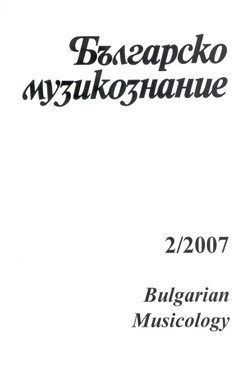Лужишкосербско песенно стопанство
The Lusatian Sorbian Song Industry
Author(s): Rosemary StatelovaSubject(s): Music
Published by: Институт за изследване на изкуствата, Българска академия на науките
Summary/Abstract: This article examines the contemporary song and singing practices of the West Slavic population (today numbering around 60 000 people) that identifies itself using the ethnonym serby. Also known as Sorbcn or Wenden in German and Sorbs in English, this group resides in the Lusatia region of (eastern) Germany. The author follows Jan Assmann’s idea of the existence of so-called connective structures that help to guarantee generational continuity within a given cultural community. For the Sorbs of Lusatia, this connective structure consists precisely of collective, group and individual singing of a specific repertoire of “patriotic” songs (M. Solta-Scholze) . One of the historical sources of this repertoire was the founding and establishing of Sorbian song/singing festivals as a clear manifestation of the new Sorbian urban culture during the 19th century in the city of Bauzen. In the cultural memory of this community, which was striving towards national consolidation, the idea of the Sorbian holiday as an event with songs/singing was established. The author offers her own analysis of the phenomenon of the Sorbian folk song, based on a scalar intonational examination of songs from the well-known collection from 1841- 1843 by Jan Arnost Smoler “Sorbian Folk Songs from Upper and Lower Lusatia” (Jan Arnost Smoler/ Johann Ernst Schmaler “Volkslieder der Sorben in der Ober und Nieder-Lausitz”). This examination of the contemporary Sorbian song industry is based on a comparison with observations on Sorbian singing practices made in Lusatia in 1886 by the founder of Slavic musical folkloristics, the Czech scholar Ludvik Kuba. At the end of the article, the author offers her impressions of one of the empirical objects examined: The May Tree Festival, organized in May 2003 by students-Sorbianists from the Leipzig University.
Journal: Българско музикознание
- Issue Year: 2007
- Issue No: 2
- Page Range: 70-101
- Page Count: 32
- Language: Bulgarian
- Content File-PDF

